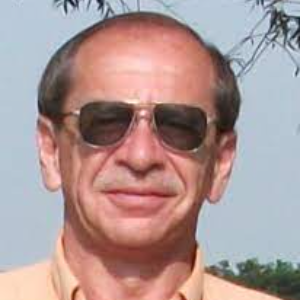Title : Simplifying Quantum Photonic Systems
Abstract:
Controllable, quantum-strong correlations of polarization states can be implemented with multi-photon independent states. Polarization-based photonic quantum correlations can be traced back to the overlap of the polarization Stokes vectors on the Poincaré sphere between two polarization filters. The quantum Rayleigh scattering prevents a single photon from propagating in a straight line inside a dielectric medium, and it also provides a mechanism for the projective measurement of polarization. Complexities associated with single-photon sources and detectors can be eliminated because the quantum Rayleigh scattering in a dielectric medium destroys entangled photons. Entanglement-free, identical sources and processing devices give rise to correlations rather than these being caused by “quantum nonlocality”. These analytic developments were prompted by the vanishing expectation values of the Pauli spin vector for a single photon of maximally entangled photonic Bell states.
Following the experimental results of quantum-strong correlations obtained with independent photons [5], the analysis presented in this Letter was motivated by two elements: 1) the vanishing of local expectation values of the Pauli spin operators for maximally entangled single photons, which contradicts the physically measured state of polarization; and 2) the quantum Rayleigh conversion of photons which scatters entangled photons. Quantum-strong correlations of polarized photons can be obtained with independent inputs to identical measuring devices and configurations. The correlation function is reminiscent of the overlap between two polarization Stokes vectors on the Poincaré sphere which can be derived from the Jones vectors. Correlation functions derived from independent mixed quantum states are equivalent to correlations of Stokes vectors on the Poincaré sphere. The correlation function can be controlled through the input angles of polarization, and a large number of photons carried simultaneously by a beam front will deliver a faster result than a sequential counting of single photons.
As the parametric amplification of spontaneously emitted is unavoidable, functional operations commonly attributed to single-photon, entangled states are, in reality, implemented practically with independent, multiple photons per radiation modes that are capable of overcoming the quantum Rayleigh spontaneous emission through stimulated emission. Additionally, the Pauli spin operators act on the state of polarization regardless of the number of photons carried by the mode.
The parallel operations on multiple quantum states, described by a mixed density matrix, correspond to the simultaneous presence of all the modes involved in the operation. One optical multi-photon source will replace multiple one-photon sources, thereby streamlining the design, fabrication, and operations of quantum photonic integrated circuits.
Audience Take Away:
- Independent, uncorrelated photons produce the same correlation functions – involving optical intensities and polarization states – for quantum data processing, as do “entangled” photons. This is caused by the presence of the quantum Rayleigh scattering of photons in a dielectric medium, which destroys any alleged entanglement;
- As a consequence of paragraph 1., the complexity and cost of designing, fabricating, and operating quantum photonic integrated circuits will be significantly reduced.
- A comprehensive understanding of physical interactions taking place in dielectric devices will streamline the design, fabrication and operation of the quantum systems in question.


